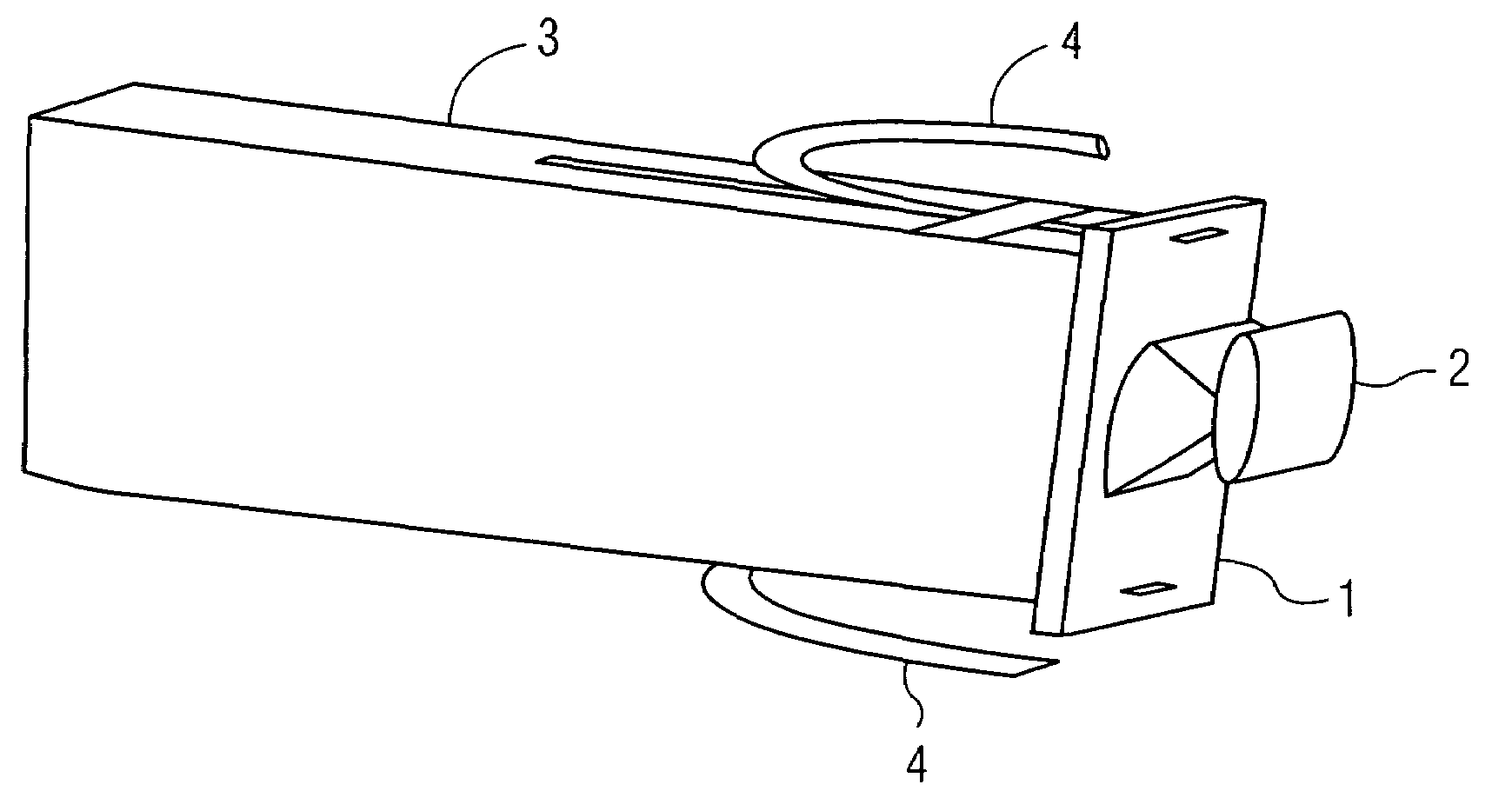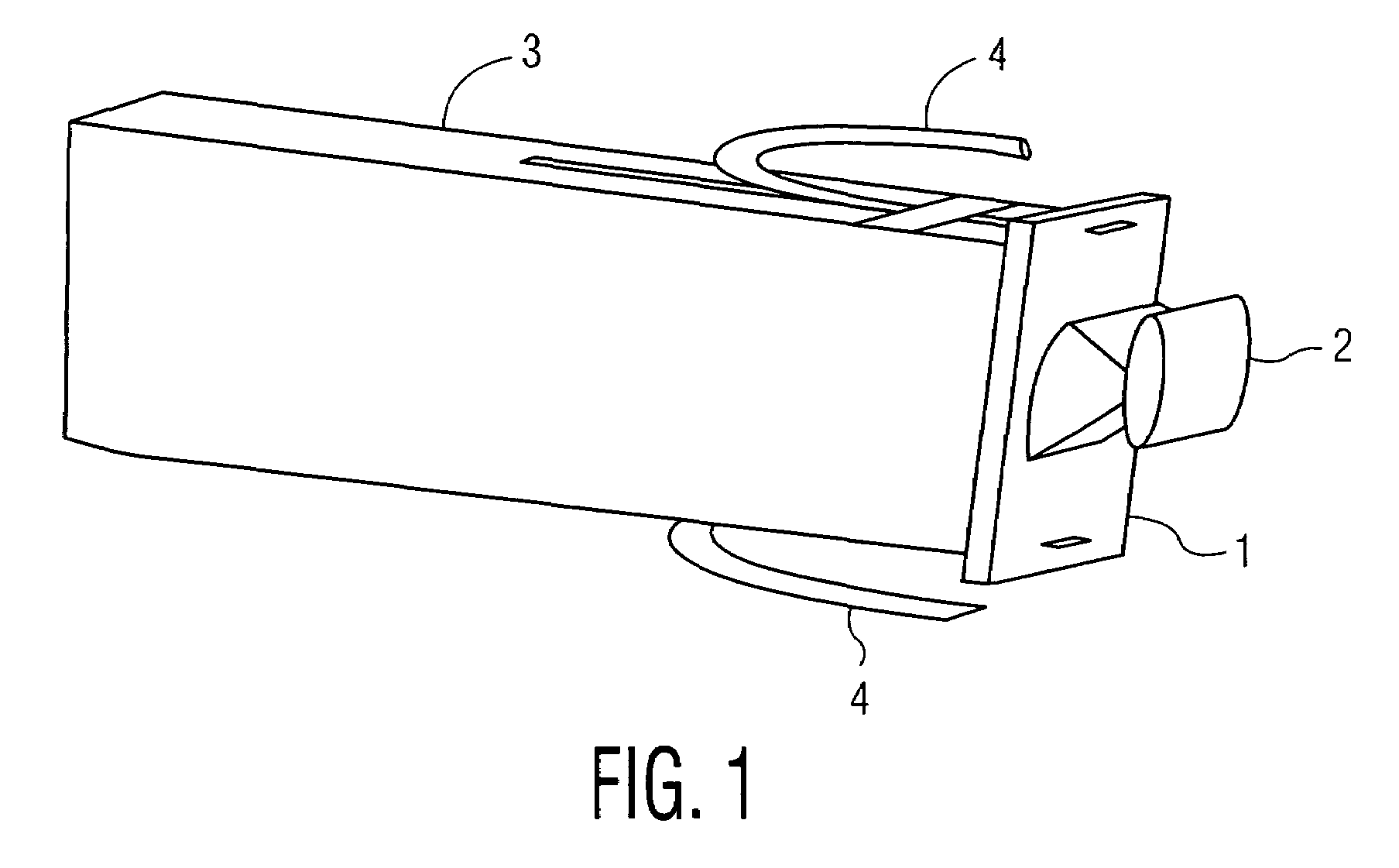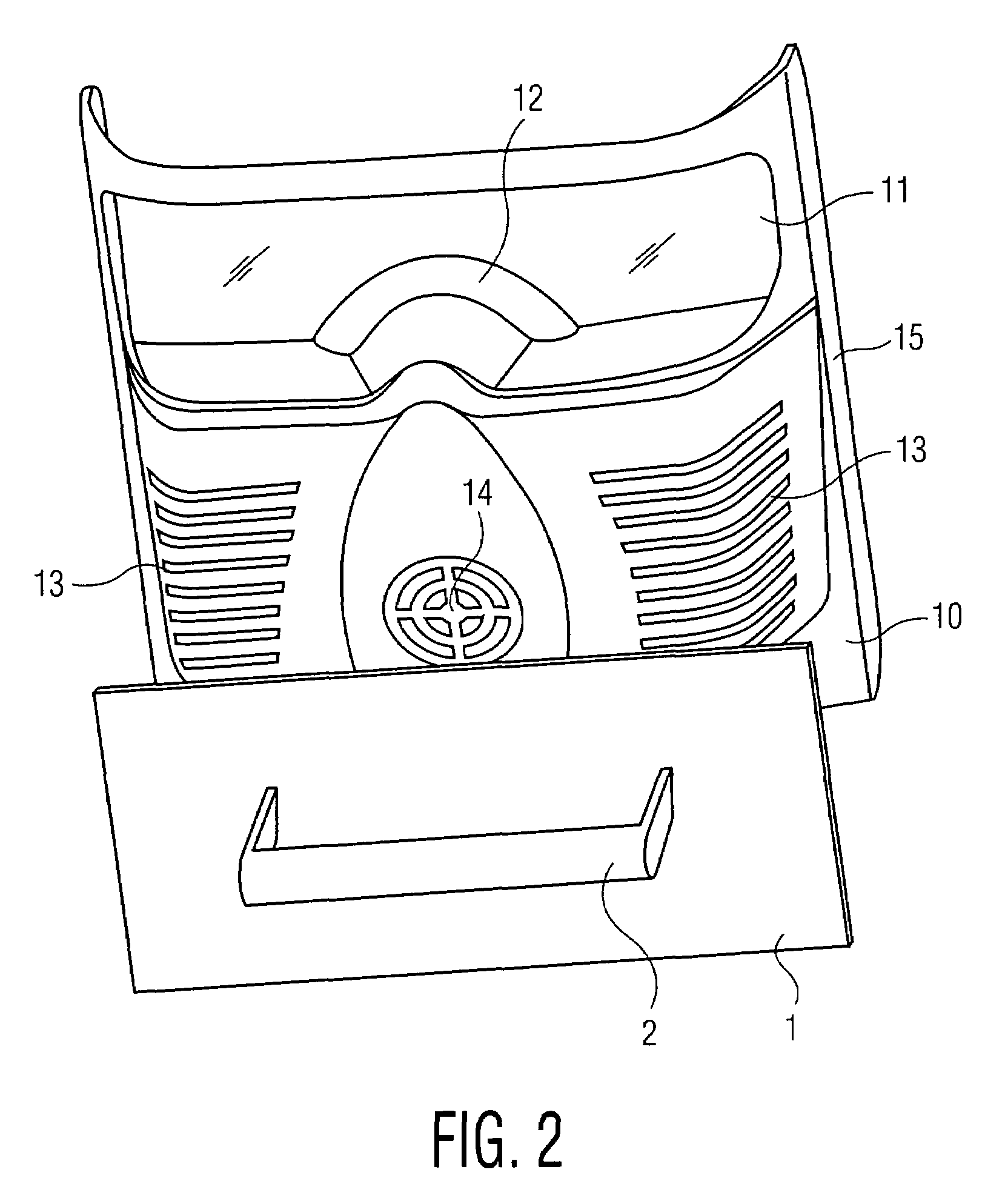Escape hood
a technology of hoods and hoods, applied in the field of escape hoods, can solve the problems of inability to maintain hoods indefinitely, the scope of such incidents is far more visible, and the need for rapid deploymen
- Summary
- Abstract
- Description
- Claims
- Application Information
AI Technical Summary
Benefits of technology
Problems solved by technology
Method used
Image
Examples
Embodiment Construction
[0061]In the figures, the same or similar components are indicated by the same or similar reference numerals in order to simplify and clarify the accompanying description.
[0062]The escape hood is preferably self-configuring after removal from the rack. Therefore, a resilient member is provided, which expands the hood to a usable state. It is preferred that the escape hood include a frame or framework, rather than be present as a flaccid bag. This is for two reasons. First, a structural framework assures that the window is properly aligned and spaced from the eyes and the exhaust vent is proximate to the mouth. Second, the framework makes the hood more comfortable. The frame may be formed of steel, or other spring material.
[0063]The self activation, upon hood extraction from the slot in the rack, may be implemented, for example, by a cutting edge which slices through a sealing structure around the escape hood during extraction. In this case, the cutting edges, which may be part of th...
PUM
 Login to View More
Login to View More Abstract
Description
Claims
Application Information
 Login to View More
Login to View More - R&D
- Intellectual Property
- Life Sciences
- Materials
- Tech Scout
- Unparalleled Data Quality
- Higher Quality Content
- 60% Fewer Hallucinations
Browse by: Latest US Patents, China's latest patents, Technical Efficacy Thesaurus, Application Domain, Technology Topic, Popular Technical Reports.
© 2025 PatSnap. All rights reserved.Legal|Privacy policy|Modern Slavery Act Transparency Statement|Sitemap|About US| Contact US: help@patsnap.com



